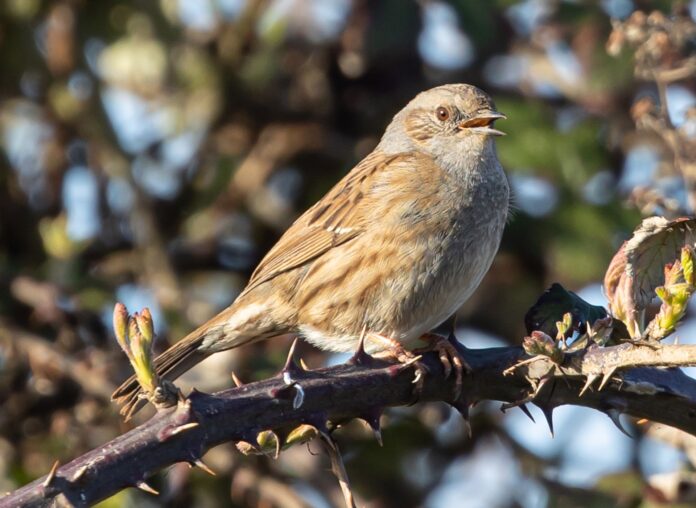Source: MakeLemonade.nz
Ōtepoti – The tweets of a little song sparrow and its ‘bird brain’ are a lot more complex and like human language than anyone realised.
A new study has found for the first time male sparrows deliberately shuffle and mix their song repertoire possibly as a way to keep it interesting for their female audience.
The research by Duke University and the University of Miami, shows that singing males keep track of the order of their songs and how often each one is sung for up to 30 minutes so they can curate both their current playlist and the next one.
The findings appear in Proceedings of the Royal Society B on January 26.
House sparrows were introduced to New Zealand first in the mid 1860s. They soon became abundant and were said to be combating plagues of agricultural pests. By the 1880s, however, they were regarded as pests. Sparrows have made their own way to offshore islands, breeding on those with human habitation.
Song sparrows are a common songbird throughout North America, but only males sing. They use their song to defend their turf and court mates.
When wooing, song sparrows belt up to 12 different two-second songs, a repertoire that can take nearly 30 minutes to get through, since they repeat the same song, several times, before going on to the next track. In addition to varying the number of repeats, males also shuffle the order of their tunes each time they sing their discography.
However, a big unknown had been whether males change up their song order and repeats by accident or by design.
To get some data on whether or not the birds intentionally shuffle and mix their tunes, researchers loaded up the recording gear, trekked out to the backwoods of northwest Pennsylvania, set up mics pointed to the trees and patiently waited for five hours a day.
After recording the full suite of songs from more than 30 birds, the team pored over visual spectrographs of the trills and analysed how often each song was sung and in what order. The first clue that males keep tabs on their tweets to avoid repetition was that much like a Spotify playlist, males generally sing through their full repertoire before repeating a song.
The researchers also found that the more a sparrow sang a given song, the longer he took to get back to that song, possibly to build up hype and novelty once that song was played again. For example, if a male sang Song A 10 times in a row, he’d sing even more renditions of his other songs before returning to Song A again.
Alternatively, if Song A was only warbled three times during a set, then a male song sparrow might recite a shorter rendition of the rest of his repertoire in order to return to the still novel and underplayed Song A.
Taken together, these findings demonstrate that song sparrows possess an extremely rare talent with an equally uncommon name: long-distance dependencies.
It means that what a male song sparrow sings in the moment depends on what he sang as much as 30 minutes ago. That’s a 360 times larger memory capacity than the previous record holder, the canary, who can only juggle about five seconds worth of song information in this way.



